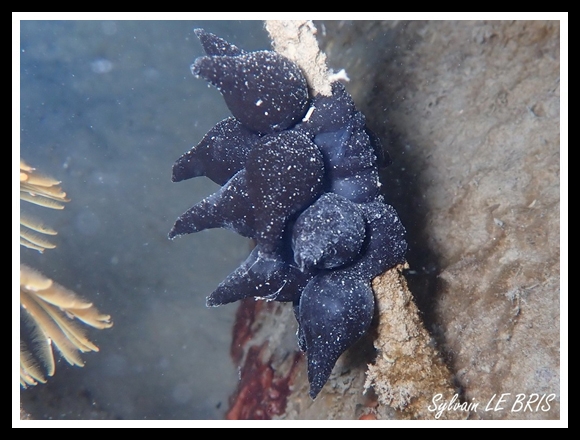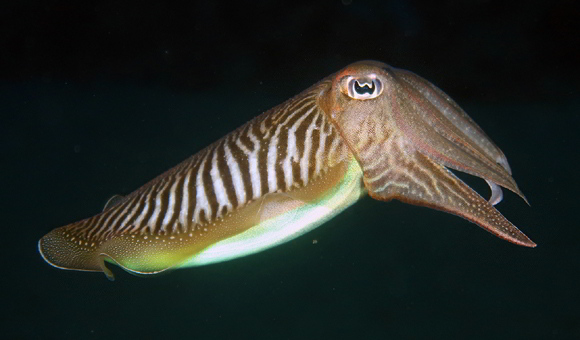
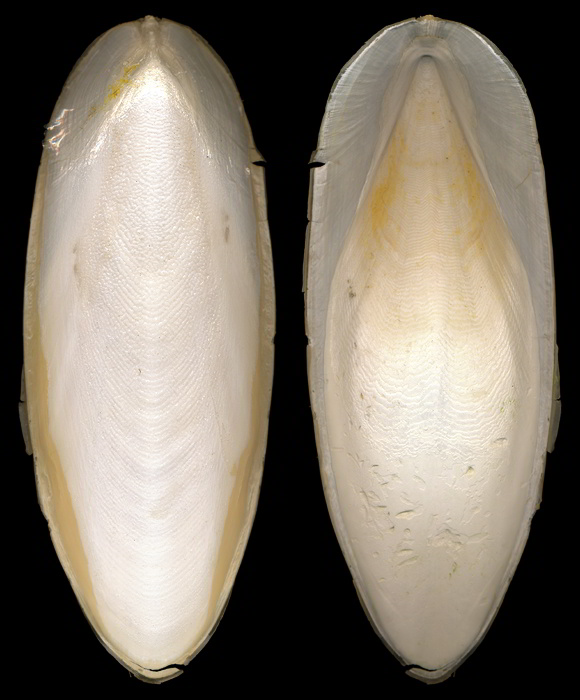
Baltic & North See to South Africa, Mediterranean. Predator on mobile preys, mostly encountered on soft bottoms or in meadows, from the infralittoral down to circa 200m deep. Synonyms: filliouxi, fischeri, mediterranea, zebrina.
Beachstormed, La Maguelone, south of Palavas-les-Flots, Hérault, Occitania, S. France. 216mm.
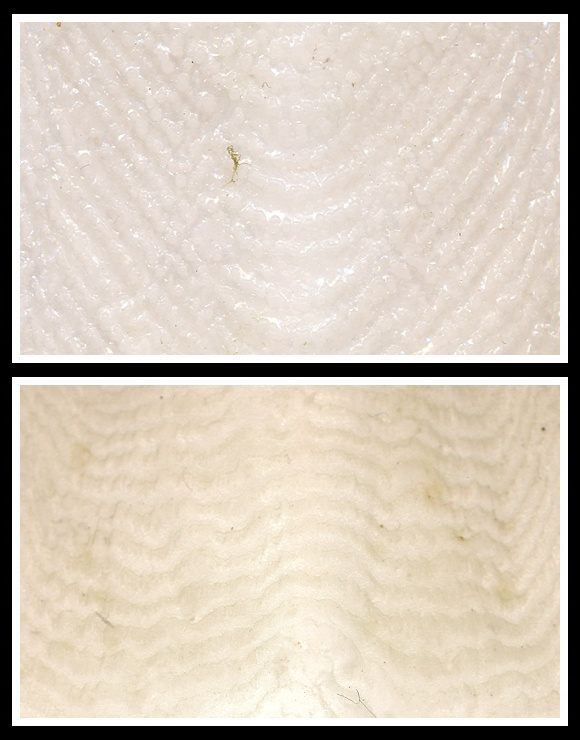
« Sepion oval, elliptical, slightly acuminate before, enlarged and rounded behind, armed with an obtuse tubercle; dorsal surface convex, rough in the middle, almost smooth on the sides; an intermediate space covered with pronounced, elliptical roughness exists between the smooth region and the central rough region; underside very convex in the upper two thirds, concave in the last third, with short, wavy, very close lines of locules. » – A. T. de Rochebrune: “Étude monographique de la famille des Sepiadae”, Bulletin de la Société philomathique de Paris series VII vol.VIII, Paris 1884, p.120. – Top: dorsal sculpture; bottom: ventral sculpture.
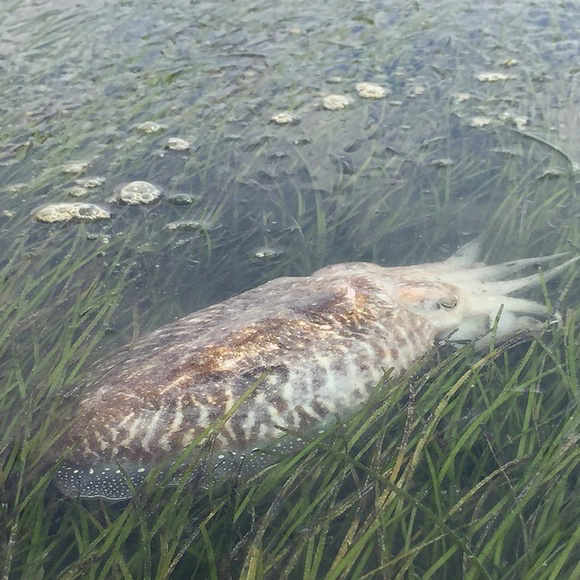
A large adult specimen sleeping at the surface of a meadow, Esteiro de Ramalhete, Parque Natural da Ria Formosa, Faro, Algarve, S. Portugal. Original picture provided by C. B. de los Santos for iNaturalist – (CC BY-NC-SA).
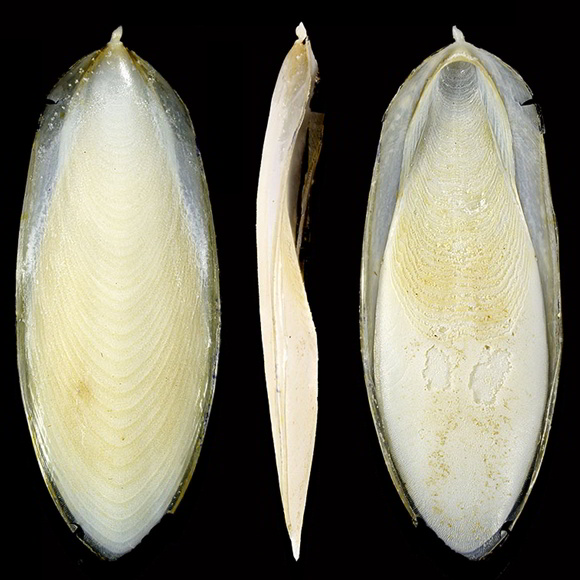
Sexual maturity (april-may) signals the end of life. The babies (june) measure between 10 to 15mm long. Their size increases very quickly: circa 10mm per week (DORIS). This sepion (40mm) belonged to a young specimen dead in the beginning of july (third week after hatch). Leucate, Occitania, S. France.
Original pictures provided by S. Clanzig (FR).
– (CC BY-NC-SA) –
